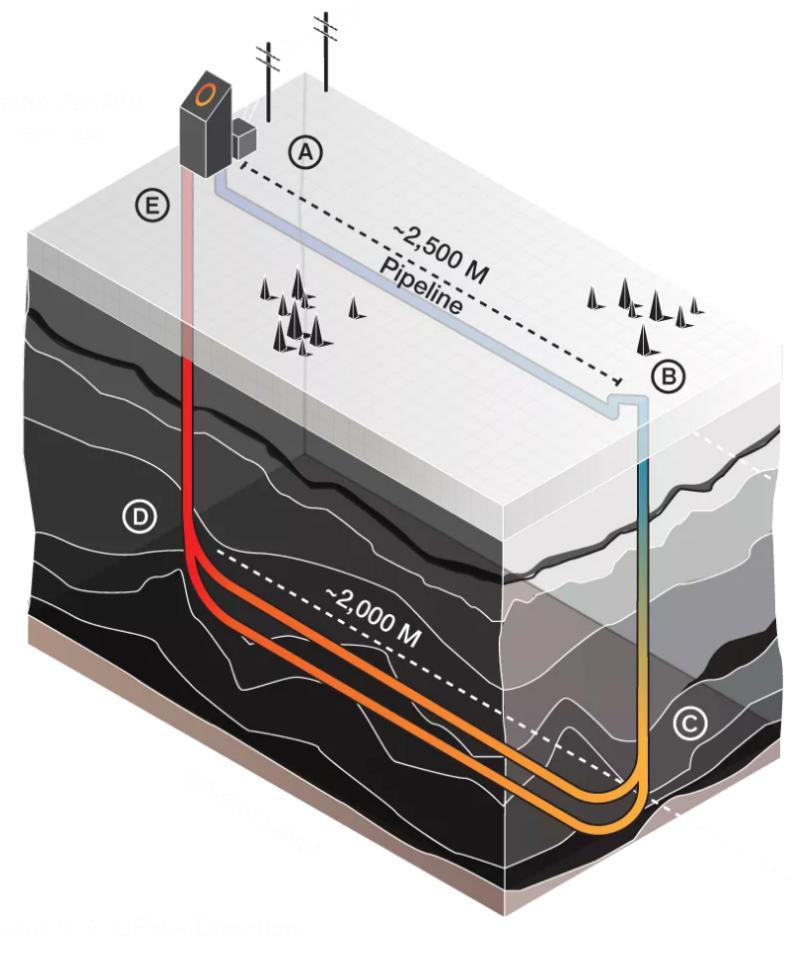Geothermal energy is poised for a breakout
By: David Roberts (Vox)


An engineering problem that, when solved, solves energy.

B i d e n 2 0 2 0


Mickey Strider/Loop Images/Universal Images Group via Getty Images
Geothermal power is the perpetual also-ran of renewable energy , chugging along in the background for decades, never quite breaking out of its little niche, forever causing energy experts to say, "Oh, yeah, geothermal ... what's up with that?"
Well, after approximately 15 years of reporting on energy, I finally took the time to do a deep dive into geothermal and I am here to report: This is a great time to start paying attention!
After many years of failure to launch, new companies and technologies have brought geothermal out of its doldrums, to the point that it may finally be ready to scale up and become a major player in clean energy. In fact, if its more enthusiastic backers are correct, geothermal may hold the key to making 100 percent clean electricity available to everyone in the world. And as a bonus, it's an opportunity for the struggling oil and gas industry to put its capital and skills to work on something that won't degrade the planet.
Vik Rao, former chief technology officer at Halliburton, the oil field service giant, recently told the geothermal blog Heat Beat, "geothermal is no longer a niche play. It's scalable, potentially in a highly material way. Scalability gets the attention of the [oil services] industry."
In this post, I'm going to cover technologies meant to mine heat deep from the Earth, which can then be used as direct heat for communities, to generate electricity, or to do both through "cogeneration" of heat and electricity. (Note that ground-source heat pumps, which take advantage of steady shallow-earth temperatures to heat buildings or groups of buildings, are sometimes included among geothermal technologies, but I'm going to leave them aside for a separate post.)
Before we get to the technologies, though, let's take a quick look at geothermal energy itself.

Old Faithful, in Yellowstone Park
William Campbell/Getty Images
What is geothermal energy?
Fun fact: The molten core of the Earth, about 4,000 miles down, is roughly as hot as the surface of the sun, over 6,000°C, or 10,800°F. That's why the geothermal energy industry is fond of calling it "the sun beneath our feet." The heat is continuously replenished by the decay of naturally occurring radioactive elements, at a flow rate of roughly 30 terawatts, almost double all human energy consumption. That process is expected to continue for billions of years.
The ARPA-E project AltaRock Energy estimates that "just 0.1% of the heat content of Earth could supply humanity's total energy needs for 2 million years." There's enough energy in the Earth's crust, just a few miles down, to power all of human civilization for generations to come. All we have to do is tap into it.
Tapping into it, though, turns out to be pretty tricky.
The easiest way to do so is to make direct use of the heat where it breaks the surface, in hot springs, geysers, and fumaroles (steam vents near volcanic activity). The warm water can be used for bathing or washing, and the heat for cooking. Using geothermal energy this way has been around since the earliest humans, going back at least to the Middle Paleolithic.
Slightly more sophisticated is tapping into naturally occurring reservoirs of geothermal heat close to the surface to heat buildings. In the 1890s, the city of Boise, Idaho, tapped one to create the US's first district heating system, whereby one central source of heat feeds into multiple commercial and residential buildings. (Boise's downtown still uses it.)
After that came digging deeper and using the heat to generate electricity. The first commercial geothermal power plant in the US was opened in 1960 in the Geysers, California; there are more than 60 operating in the US today.
The technology for accessing deep geothermal is developing at a dizzying pace these days. Let's take a look at its basic forms, from established to experimental.

Four basic types of geothermal energy technology
Once it reaches the surface, geothermal energy is used for a wide variety of purposes, mainly because there are many different ways to use heat. Depending on how hot the resource is, it can be exploited by numerous industries. Virtually any level of heat can be used directly, to run fisheries or greenhouses, to dry cement, or (the really hot stuff) to make hydrogen.
To make electricity, higher minimum heats are required. The older generation of geothermal power plants used steam directly from the ground, or "flashed" fluids from the ground into steam, to run a turbine. (The water and air pollution that has been associated with first-generation geothermal projects was all from flash plants, which boil water from underground and end up off-gassing everything in it, including some nasty pollutants.)
Flash plants require heat of at least 200°C. The newer, "binary" plants run fluids from the ground past a heat exchanger and then use the heat to flash steam (meaning the underground water isn't boiled directly and there's no air or water pollution). Binary plants can generate electricity from around 100°C up.
Getting the heat to the surface is the trick. For that purpose, it's useful to think of geothermal energy technology as falling into four broad categories.
1) Conventional hydrothermal resources
In a few select areas (think parts of Iceland, or California), water or steam heated by Earth's core rises through relatively permeable rock, full of fissures and fractures, only to become trapped under an impermeable caprock. These giant reservoirs of pressurized hot water often reveal themselves on the surface through fumaroles or hot springs.


Once a reservoir is located, exploratory wells are drilled until a suitable location can be located for a production well. The hot water that rises through that well can range from just over ambient temperature to 370°C, depending on the field (to get into temperatures hotter than that requires going deeper; more on that later). Once heat is extracted from them, the fluids are cooled and returned to the field via an injection well, to maintain pressure.
Almost all conventional geothermal projects, most of what's now running, make use of high-quality hydrothermal resources.
One problem with hydrothermal reservoirs is that their visible manifestations — hot springs and fumaroles — remain the only reliable way to identify them; exploration and characterization of new fields is expensive and uncertain. (This is one area of furious technological development.)
Another problem is that they are extremely geographically concentrated. In the US, geothermal electricity is mostly located in California, Nevada, Hawaii, and Alaska, where tectonic plates are grinding beneath the surface.

Where hydrothermal resources are readily available, the advantages of geothermal energy are well-understood. The global geothermal electricity fleet has an average capacity factor — time spent running relative to maximum capacity — of 74.5 percent, and newer plants often exceed 90 percent. Geothermal can provide always-on, baseload power; it is the only renewable resource to do so.
As of the end of 2019, global installed geothermal electric capacity, dispersed across 29 countries, reached 15.4 GW, with the US in the lead.

The final problem is that most of the big, well-explored, well-characterized fields have been tapped out, at least with conventional technology. Geothermal that relies on high-quality hydrothermal resources remains a niche solution, difficult to standardize and scale. That's why it has lagged behind other renewable resources for so long.
Which brings us to ...
Lots and lots more! Everything you could possibly want to know... and more... about geothermal energy is in the Original Article!

Tags







